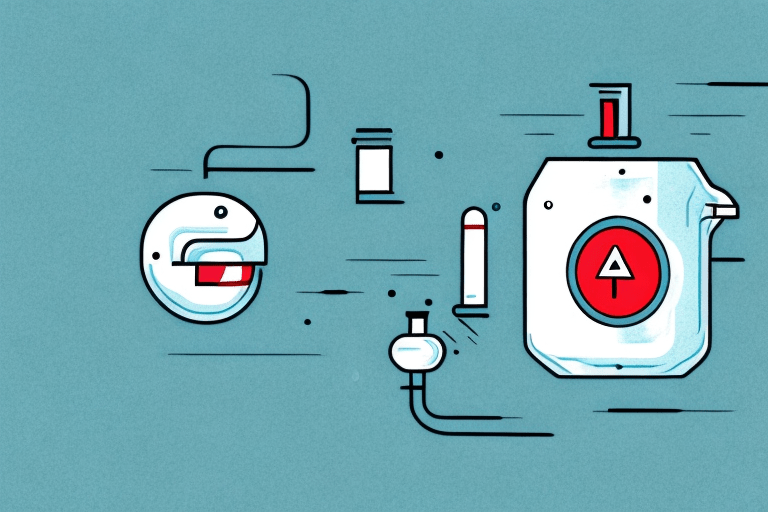Stomach problems are quite common among people of all ages and backgrounds. Pain, discomfort, indigestion, and bloating are just a few of the symptoms that can indicate different pathologies and conditions. One such issue that you might be experiencing is an H. Pylori infection. If you think you might have this type of infection or have recently been diagnosed with H. Pylori, then you’re probably wondering how to test for it. Luckily, there are many different types of tests available, including at-home H. Pylori tests that are quick, easy, and convenient. In this article, we’ll explore what an H. Pylori infection is, why you need to test for it, and how at-home tests work.
Understanding H. Pylori Infection
H. Pylori, or Helicobacter pylori, is a type of bacteria that can infect the stomach and small intestine. This bacteria lives in the digestive tract and is usually harmless. However, in some individuals, it can cause a range of gastrointestinal symptoms that require treatment. Left untreated, an H. Pylori infection can lead to severe health issues.
What is H. Pylori?
H. Pylori is a spiral-shaped bacterium that is commonly found in the stomach lining. It was first discovered by Australian scientists Barry Marshall and Robin Warren in 1982. H. Pylori can survive in the acidic environment of the stomach by producing an enzyme called urease, which neutralizes stomach acid. This allows the bacteria to attach to the stomach lining and cause inflammation.
Symptoms of H. Pylori Infection
The symptoms of H. Pylori infection can vary between individuals and can range from mild to severe. Some of the most common symptoms include:
- Abdominal pain and discomfort
- Bloating and stomach gas
- Heartburn and reflux
- Nausea and vomiting
- Poor appetite and weight loss
- Frequent belching
If you’re experiencing any of these symptoms, it’s important to get tested for H. Pylori as soon as possible. In some cases, an H. Pylori infection can lead to more serious health problems, such as stomach ulcers and stomach cancer.
Causes and Risk Factors
H. Pylori is usually spread through contaminated food or water, but it can also be transmitted from person to person through close contact. Some of the risk factors that can increase your chances of getting infected include:
- Living in crowded or unsanitary conditions
- Having poor hygiene habits
- Eating contaminated food or drinking contaminated water
- Taking certain medications that reduce stomach acid
- Having a weak immune system
It’s important to note that not everyone who has H. Pylori has symptoms, and some people might not even know they’re infected. That’s why getting tested is so important. If you have a family member or close contact who has been diagnosed with an H. Pylori infection, you may also be at increased risk of infection.
Treatment Options
If you test positive for H. Pylori, your doctor will likely recommend a course of antibiotics to help eradicate the bacteria. Depending on the severity of your symptoms, you may also be prescribed acid-reducing medications to help relieve discomfort. In some cases, lifestyle changes such as improving hygiene habits and avoiding contaminated food and water may also be recommended.
It’s important to follow your doctor’s treatment plan closely to ensure that the infection is fully eradicated. If left untreated, an H. Pylori infection can lead to serious health complications, including stomach ulcers, stomach cancer, and even death.
Preventing H. Pylori Infection
While there is no guaranteed way to prevent H. Pylori infection, there are steps you can take to reduce your risk. These include:
- Washing your hands regularly with soap and water
- Avoiding sharing utensils or drinking glasses with others
- Drinking clean, safe water
- Cooking meat thoroughly
- Storing food properly
- Practicing good hygiene habits, such as showering regularly and brushing your teeth twice a day
By taking these steps, you can help protect yourself from H. Pylori infection and other gastrointestinal illnesses.
The Importance of Testing for H. Pylori
H. Pylori is a type of bacteria that can infect the lining of the stomach and small intestine. While many people with an H. Pylori infection may not experience any symptoms, it’s important to get tested and treated if you suspect you have an infection.
Long-Term Health Risks
If left untreated, an H. Pylori infection can cause serious health problems over time. Some of the most common long-term risks of H. Pylori infection include:
- Peptic ulcers
- Gastritis (inflammation of the stomach lining)
- Gastric cancer
Peptic ulcers are open sores that form in the lining of the stomach or small intestine. These can cause a burning pain in the abdomen, nausea, and vomiting. Gastritis can cause stomach pain, bloating, and nausea. Gastric cancer is a type of cancer that starts in the stomach and can spread to other parts of the body.
Getting tested and treated early can help you avoid these health risks and keep your digestive system healthy and functioning properly.
Benefits of Early Detection and Treatment
Getting tested and treated for H. Pylori infection can offer many benefits, including:
- Relief from symptoms
- Prevention of long-term health risks
- Improved quality of life
- Reduced risk of transmission to others
Early detection and treatment can help relieve symptoms such as stomach pain, bloating, and nausea. It can also prevent long-term health risks such as peptic ulcers, gastritis, and gastric cancer. By getting tested and treated, you can improve your quality of life and reduce the risk of transmitting the infection to others.
If you suspect that you might have an H. Pylori infection, it’s important to get tested as soon as possible. Your healthcare provider can perform a simple blood test, breath test, or stool test to diagnose the infection. Treatment typically involves a combination of antibiotics and acid-reducing medications.
Different Types of H. Pylori Tests
There are several different types of tests available that can help diagnose an H. Pylori infection. Your healthcare provider might recommend one or more of these tests based on your symptoms, medical history, and other factors. Some of the most common types of H. Pylori tests include:
Breath Test
A breath test is a non-invasive test that can detect the presence of H. Pylori in your stomach. During this test, you’ll be asked to drink a special liquid solution that contains a small amount of radioactive carbon. After a short period of time, you’ll exhale into a bag, and the bag will be tested for the presence of radioactive carbon dioxide. If the test is positive, it means that you have an H. Pylori infection.
Blood Test
A blood test is a quick and easy way to detect the presence of H. Pylori antibodies in your blood. Antibodies are proteins that your immune system produces in response to an infection. If you have H. Pylori antibodies in your blood, it means that you’ve been exposed to the bacteria at some point in the past. This test doesn’t necessarily mean that you currently have an active infection, so your healthcare provider might order other tests to confirm the diagnosis.
Stool Test
A stool test is a simple and non-invasive way to detect the presence of H. Pylori in your digestive system. During this test, you’ll be asked to provide a sample of your stool, which will be sent to a laboratory for analysis. If the test is positive, it means that you have an H. Pylori infection.
Endoscopy
An endoscopy is a more invasive test that can help detect the presence of H. Pylori in your stomach or small intestine. During this test, your healthcare provider will insert a thin, flexible tube equipped with a camera through your mouth and into your digestive tract. The camera will allow your provider to look for signs of inflammation, ulcers, or other abnormalities that might indicate an H. Pylori infection.
How At-Home H. Pylori Tests Work
Choosing the Right Test for You
If you suspect that you might have an H. Pylori infection, an at-home test can offer a convenient and affordable way to diagnose the condition. There are several different types of at-home tests available, including breath tests, blood tests, and stool tests. Before choosing an at-home test, it’s important to talk to your healthcare provider about which test is right for you.
Step-by-Step Guide to Using an At-Home Test
Most at-home H. Pylori tests work in a similar way. Here’s a step-by-step guide to using an at-home test:
- Follow the instructions carefully. Make sure you understand how to use the test and how to interpret the results.
- Collect the sample according to the instructions provided. This might involve providing a stool sample, taking a breath sample, or pricking your finger to obtain a small blood sample.
- Package the sample according to the instructions provided and mail it to the laboratory as soon as possible.
- Wait for the results. Most at-home tests will provide results within a few days to a week after the laboratory receives your sample.
- Interpret the results carefully. Make sure you understand what the results mean and what steps you need to take next.
If your at-home test is positive, it means that you have an H. Pylori infection. You’ll need to see your healthcare provider for further testing and treatment. If your at-home test is negative, it’s still important to follow up with your healthcare provider to rule out any other potential issues.
Conclusion
An H. Pylori infection can cause a range of uncomfortable symptoms and health risks. By understanding the importance of testing for H. Pylori and knowing what types of tests are available, you can take control of your digestive health and well-being. Whether you choose an at-home test or a diagnostic test at a medical facility, the most important thing is to get tested as soon as possible and seek treatment if needed. With the right diagnosis and treatment, you can get relief from your symptoms and prevent long-term health risks.








